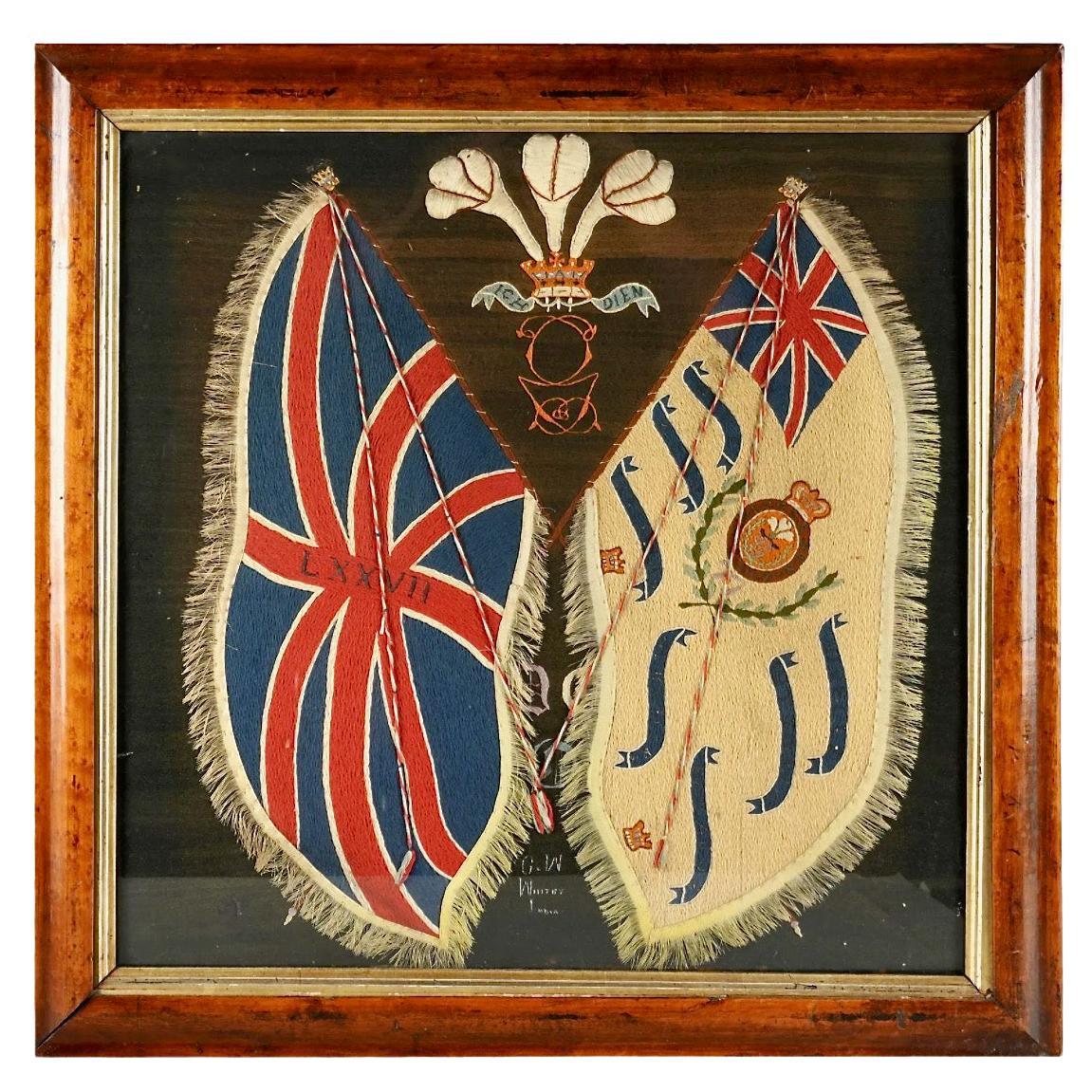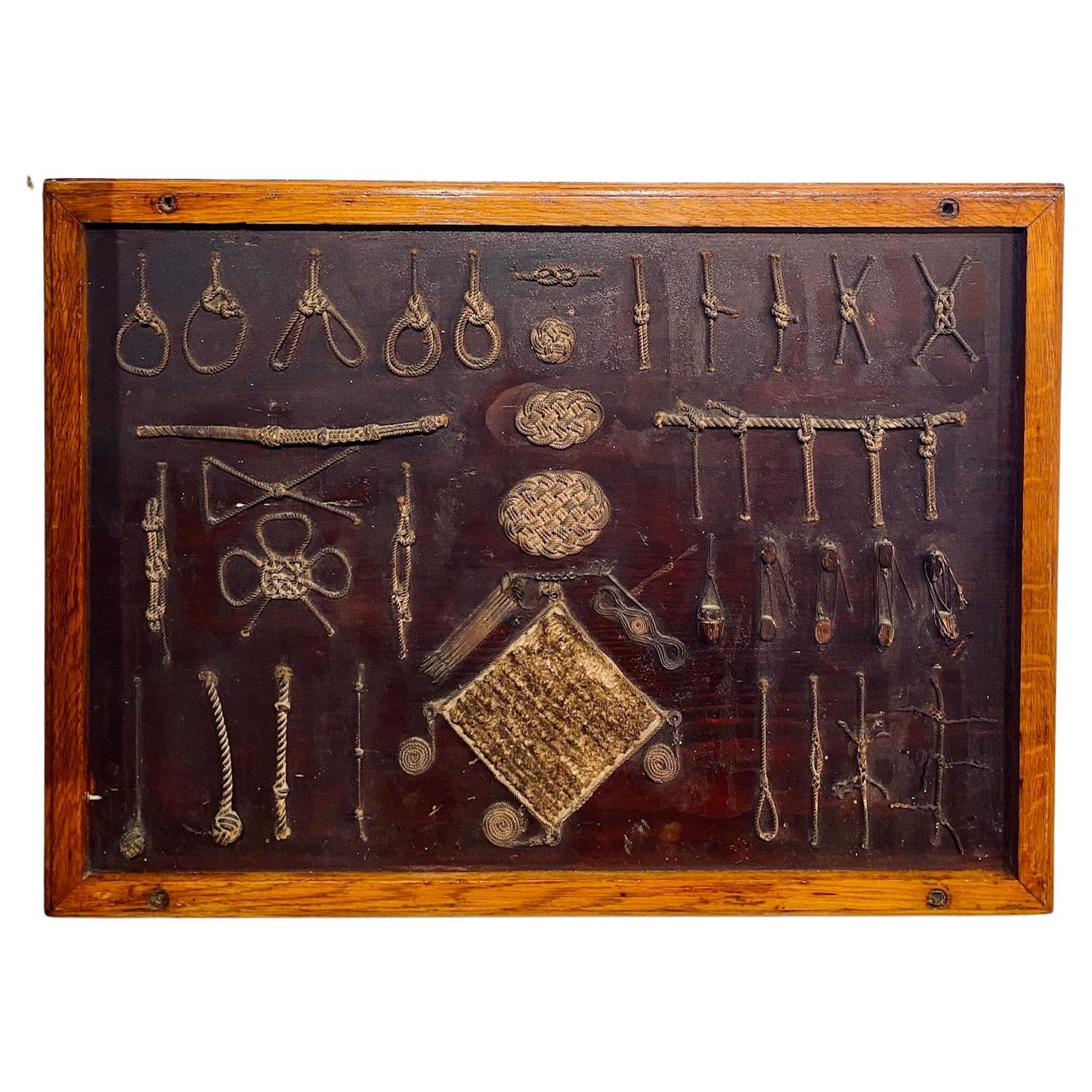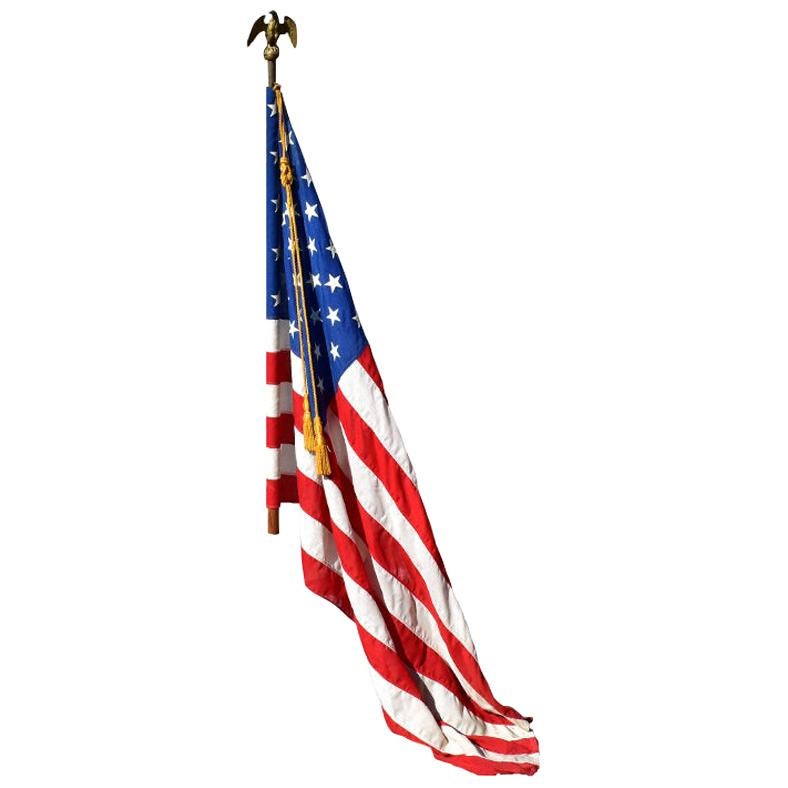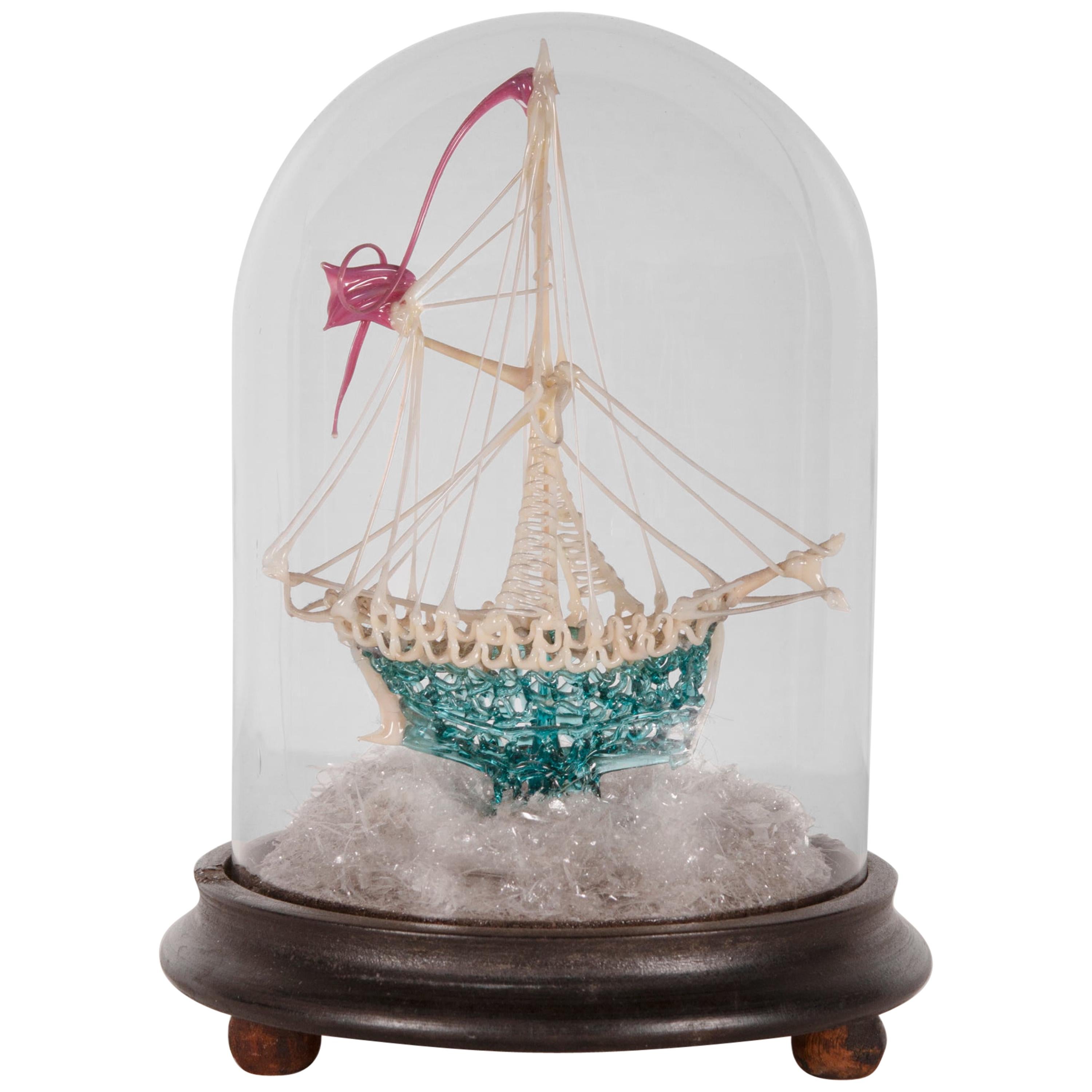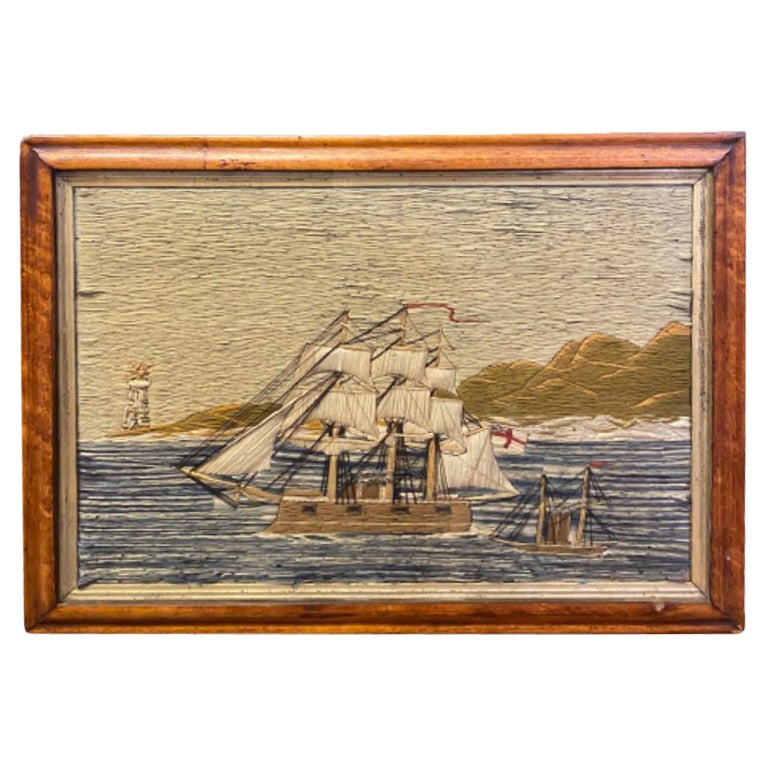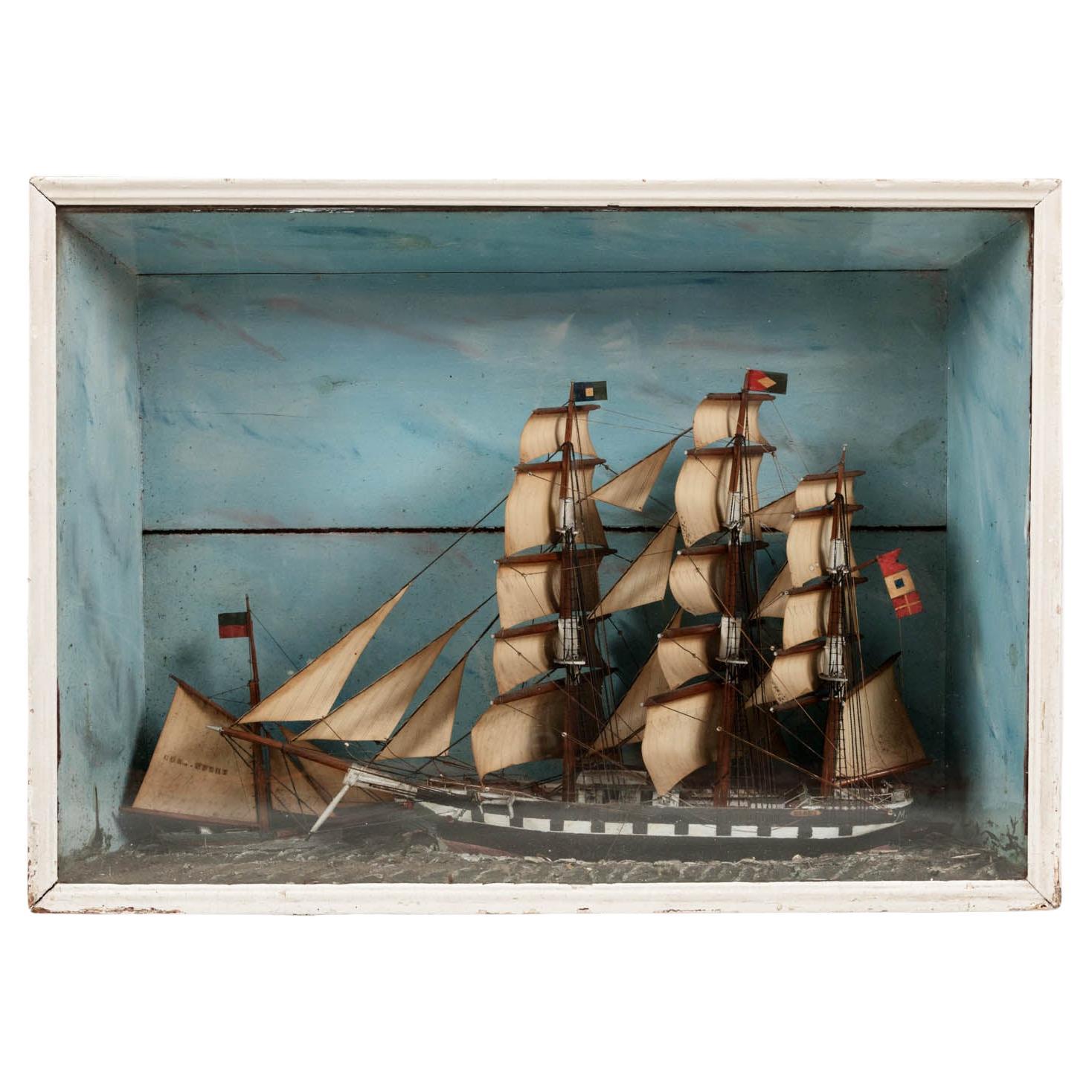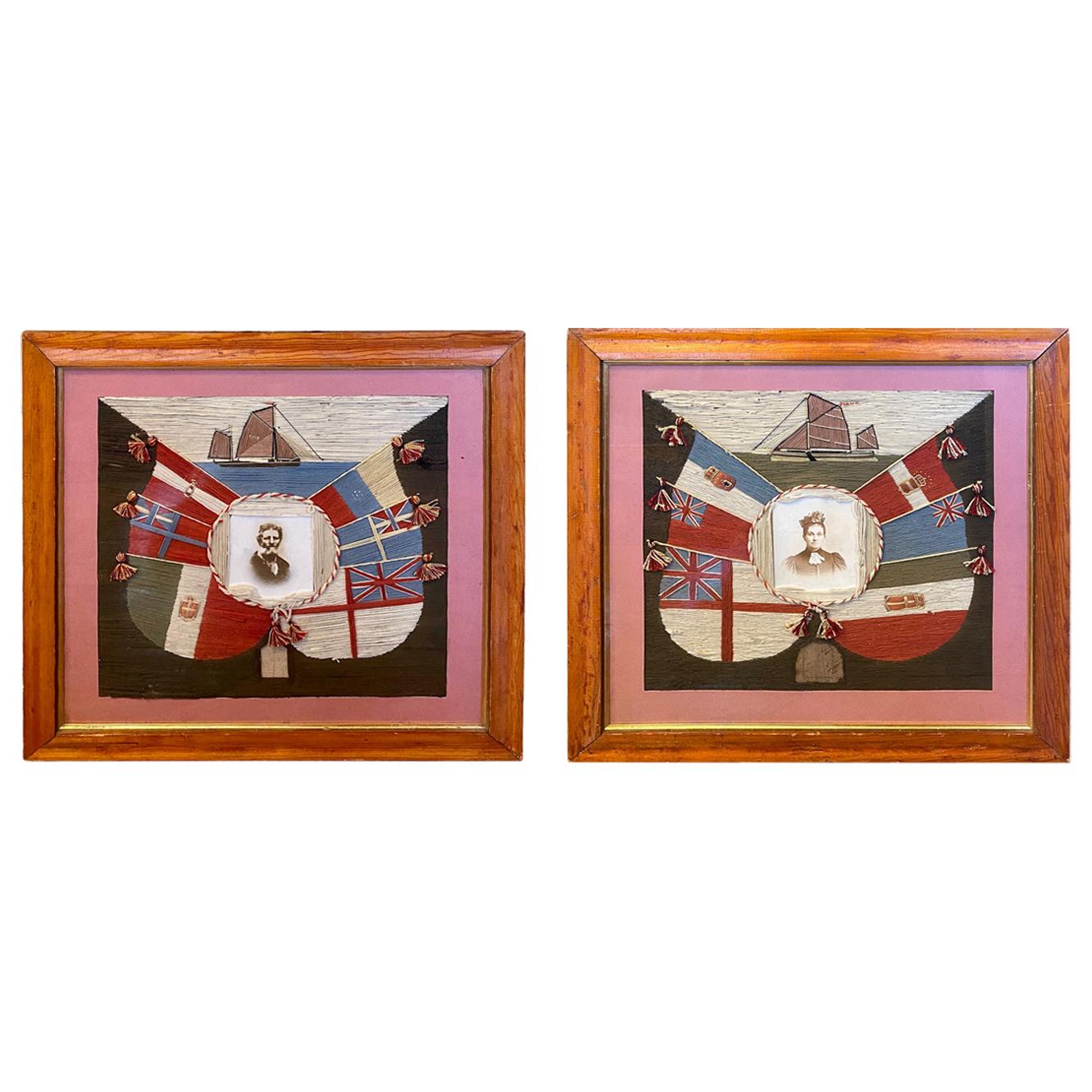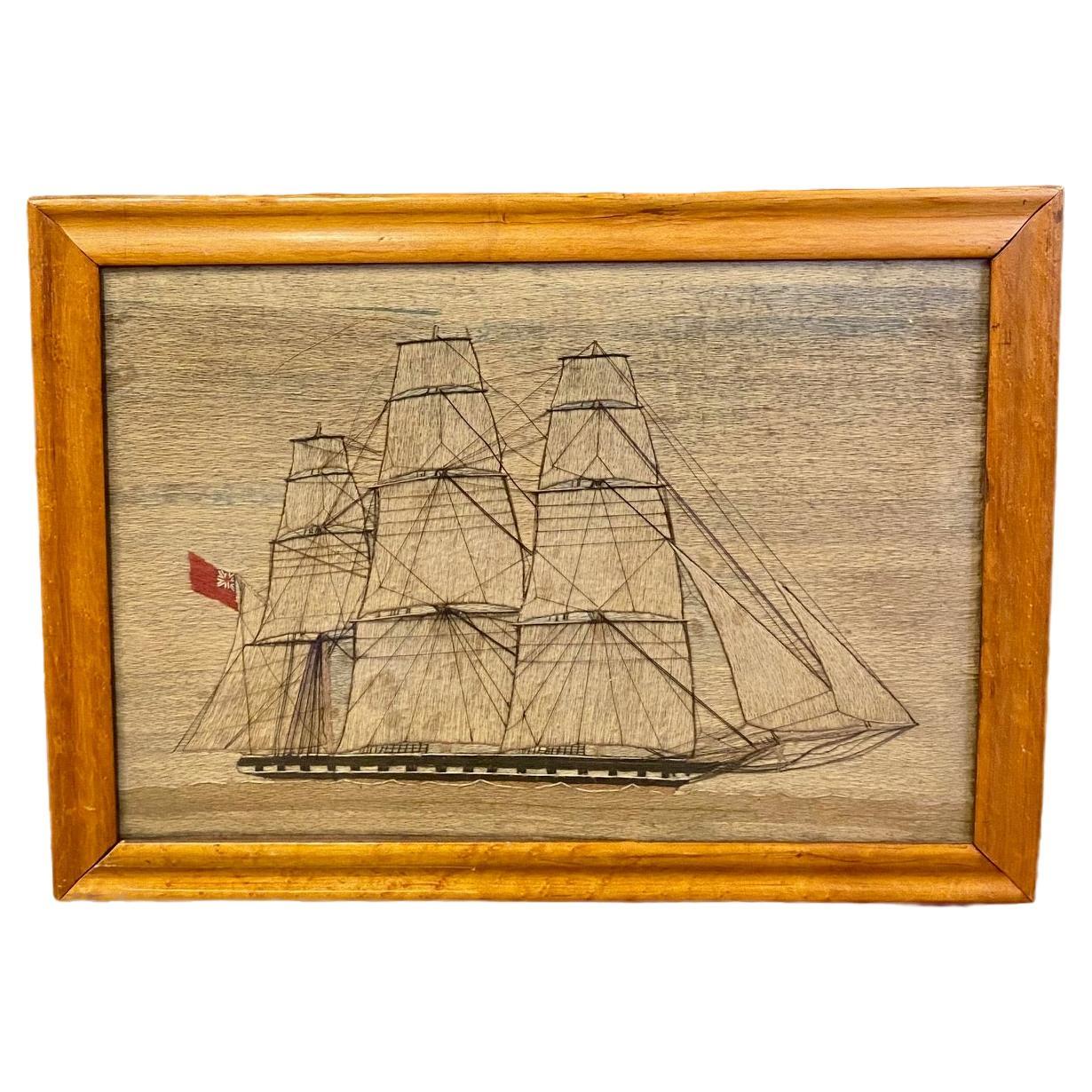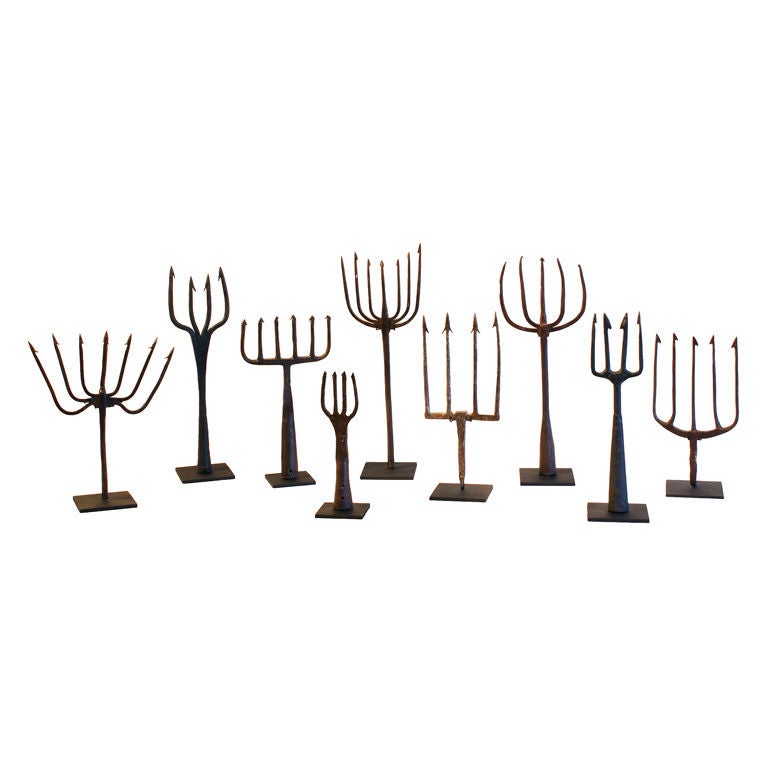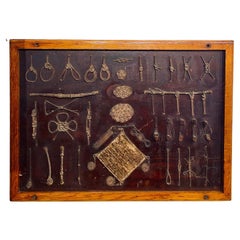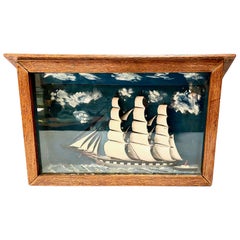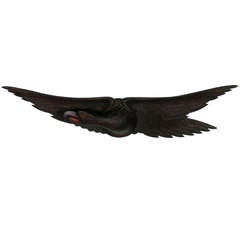
Late 19th Century Carving of An Eagle
View Similar Items
Want more images or videos?
Request additional images or videos from the seller
1 of 5
Late 19th Century Carving of An Eagle
About the Item
- Dimensions:Height: 8 in (20.32 cm)Width: 42 in (106.68 cm)Depth: 4 in (10.16 cm)
- Style:Folk Art (Of the Period)
- Materials and Techniques:
- Place of Origin:
- Period:
- Date of Manufacture:1870-1900
- Condition:See Item Description.
- Seller Location:York County, PA
- Reference Number:Seller: pat-2671stDibs: LU8497928356
About the Seller
5.0
Recognized Seller
These prestigious sellers are industry leaders and represent the highest echelon for item quality and design.
Established in 1991
1stDibs seller since 2008
61 sales on 1stDibs
Typical response time: 10 hours
More From This SellerView All
- Intricate Blown Glass Ship, Late 19th CenturyLocated in York County, PAExceptional and intricate blown glass ship, in red, white, and blue, tall and shapely with a billowing commission pennant and flag, probably Czechoslovakia, last quarter of the 19th century This mindboggling, intricate little ship is one of the more remarkable pieces of blown glass that I have ever encountered. Probably Czech-made and similar in nature to some of their most rare and extraordinary, figural, blown glass Christmas...Category
Antique Late 19th Century European Nautical Objects
MaterialsBlown Glass
- Franco-American Textile with the Image of an Eagle Holding the American and FlagLocated in York County, PAFranco-American textile with the image of an eagle supporting knotted and draped american and French flags beneath four war planes; embroidered silk floss and metallic bullion thread...Category
Mid-20th Century American Political and Patriotic Memorabilia
MaterialsSilk
- Hand-Painted 19th Century Banner with the 1867 Proposed Seal of IllinoisLocated in York County, PAHAND-PAINTED 19TH CENTURY BANNER WITH AN 1867 VERSION OF THE SEAL OF THE STATE OF ILLINOIS, PROPOSED IN THAT YEAR BY THE SECRETARY OF STATE, BUT IN A VARIATION NEVER FORMALLY ADOPTED Banner with the Illinois State Seal, in a rare variation of the design, never adopted. In 1867 Illinois Secretary of State Sharon Tyndale proposed that the phrases in the state motto be reversed. In the wake of the Civil War, (which ended in 1865,) Tyndale suggested that the verbiage be changed from "State Sovereignty--National Union" to "National Union--State Sovereignty,” which made sense given the recent secession of the Southern States, which placed their own interests first. Illinois' own Abraham Lincoln had worked hard to preserve national interests, echoed here in the altering of the language. Though Tyndale’s suggestion was rejected, he was nonetheless charged with creating a new design, which he did and was soon adopted. This displayed the dates of "1818," when Illinois became a state, and "1868," when the seal was officially changed. Interestingly enough, Tyndale did manage to send a message in the new version by turning the word “sovereignty” upside-down , with the surmised explanation that this fit accordingly with the orientation / position of the streamer. The banner is beautifully hand-painted on muslin and retains its original staff. The shape is beautifully scalloped at the bottom edge, which is painted to look as if there is an applied fringe. Most of the elements are congruent with the 1868 version, but there are various differences. Set within a shield-shaped medallion—usually circular—is the expected eagle in a side view, spread wing pose with beak uplifted. The eagle is supposed to be perched upon a rock with one talon, while gripping a Federal shield in the other. Here there is no rock and both talons grip the shield, which displays 13 stars. Note the date of "1867" and Tyndale's preferred order of the wording on the billowing ribbon in the eagle's beak. The foreground of the official design is all grass. Here there are olive branches—a peacetime reference appropriate for a country recovering from war—on a grassy area, set upon a sandy shore before Lake Michigan, with a rising sun on the horizon. Mounting: The banner was mounted and framed within our own conservation department, which is led by masters degree trained staff. We take great care in the mounting and presentation of flags and have preserved thousands of examples; more than anyone worldwide. The background is 100% cotton twill, black in color. The mount was placed in a black-painted, hand-gilded and distressed Italian molding. A shadowbox was created to accommodate the staff. The glazing is U.V. protective plexiglass. Feel free to contact us for more details. Banner - 49" x 56.5" Frame - 67.75" x 59.25" About Jeff R. Bridgman Antiques, Inc.: As an advisor to top museums and collectors alike, Jeff Bridgman is the world's leading expert and source for antique American flags and political textiles...Category
Antique 1860s American Political and Patriotic Memorabilia
MaterialsCotton
Price Upon Request - American Federal Period Cast Iron EagleLocated in York County, PAThis cast iron eagle is one of the earliest sculptural forms that one will encounter in the marketplace. It is also one of the most attractive and ico...Category
Antique 1810s American Political and Patriotic Memorabilia
MaterialsIron
- Patriotic Silk Kerchief w/ 34 Star Flags & an Image of Washington, Civil War EraLocated in York County, PAPATRIOTIC SILK KERCHIEF OF THE CIVIL WAR PERIOD, WITH AN ENGRAVED IMAGE OF GEORGE WASHINGTON, CROSSED 34 STAR FLAGS, AN EAGLE, AND "UNION FOREVER" SLOGAN: Patriotic kerchiefs that date prior to the 1876 Centennial of American Independence are rare among surviving 19th century textiles. Printed on silk and made during the opening years of the Civil War, this example consists of a white ground with red and blue borders. Inside is a prominent, copper engraved, device that consists of a large image of George Washington, crowned by a spread winged eagle that grasps a billowing streamer in its beak and talons. The ribbon boasts the Federal sentiment "Union Forever." The likeness of Washington is derived from Gilbert Stuart's Athenaeum portrait. Below this is a facsimile of Washington's signature, cradled by crossed American flags, each with 34 stars arranged in circular medallions. Although political textile historian Herbert Ridgway Collins associated this kerchief with the centennial of American independence,* there is overwhelming evidence that it was produced earlier. The large scale is much more indicative of kerchiefs produced in the 1860's and prior. Made of silk, the binding is hand-stitched, which is also common of those produced before 1876. When these facts are added to the pro-Union Civil War slogan and flags in the 34 star count, the combination of all these factors points firmly to Civil War period manufacture. Kansas was admitted into the Union as the 34th state on January 29th, 1861, about two-and-a-half months before the Confederate assault on Fort Sumter that marked the beginning of the Civil War. The 34th star was officially added on July 4th of that year and the star count remained official until July 4th, 1863. Further evidence can be found in an example of this kerchief that resides in the collection of the Adams County, Pennsylvania Historical Society, with firm provenance to a woman by the name of Emma Yount. The story goes like this: “With the Battle of Gettysburg looming and the countryside in turmoil, the Union cavalry rode into Gettysburg on the afternoon of June 30, 1863. The troopers dismounted and lounged in the town while awaiting further orders. During that time, the seven year old daughter of innkeeper Israel Yount, Emma, was playing outside their home when a cavalryman asked her to come and visit with him while he was resting. The cavalryman told her that he missed his young daughter at home and asked if little Emma would hug and kiss him on the cheek to remind him of his daughter, who he felt he might not ever see again. Emma asked her mother if she could do as the cavalryman suggested, and her mother considered the circumstances and allowed Emma to do so. Before leaving, the cavalryman gave young Emma a silk handkerchief he was carrying that featured George Washington's image and patriotic border and flags. Emma kept that handkerchief until her death in 1946 and it was then donated to the Adams County Historical Society.” The trio of brass rings, hand-sewn along the top edge, would have been added by a former owner so that it could be hung vertically. The textile itself is both beautiful in design and rare. Outside of an example pictured by Collins in his book “Threads of History” (Smithsonian Press, 1979), and the copy in the Adams County Historical Society, only three others like it are known to have surfaced, including this example. This condition is excellent for the period and it survives as an exceptional relic of the War Between the States. It is of interest to note that kerchief bears marked similarities to another, especially rare, pro-Union variety, that was produced in London for the American market. Notably larger in scale, but very much alike in terms of the fabric, the printing, the shades of red and blue, the verbiage, and the general overall graphic feel, it was produced by Foster & Porter, a known, English maker of printed kerchiefs. Instead of featuring George Washington, the imagery centers on a large cannon...Category
Antique 1860s American Political and Patriotic Memorabilia
MaterialsSilk
- 1862 Civil War Playing Cards with Stars, Flag, Sheilds and EaglesLocated in York County, PA1862 Civil War playing cards with stars, flags, shields, & eagles, and face cards illustrating civil war officers and lady, Columbia, ca 1862, Benjamin Hitchcock, New York 1862 Civil War playing cards with suits represented by stars, flags, shields, & eagles, in lieu of the traditional French suits of hearts, diamonds, clubs, and spades. The face cards feature Union Army officers and Lady Columbia [a.k.a. Lady Liberty, Goddess of Liberty]. Entitled “Union Playing Cards,” two versions of this deck were produced in New York by Benjamin W. Hitchcock’s “American Card Company.” This is the earlier of the two. The other was released in 1863. There are 52 cards in total with the ace of spades doubling as the title card, as was often the case during the 19th century. The telescoping box...Category
Antique 1860s American Political and Patriotic Memorabilia
MaterialsPaper
Price Upon Request
You May Also Like
- British Soldier's Woolwork or Woolie, 19h CenturyLocated in Pasadena, CAThis is an exceptional example of a 19th century British soldier's "Woolie" or woolwork that is signed "G.W. Whitby/India. The woolwork depicts the ...Category
Antique Early 19th Century English British Colonial Political and Patrio...
MaterialsWool, Glass, Wood
$2,600 Sale Price20% Off - Late 19th Century Sailor's Knot BoardLocated in Nantucket, MAAntique Sailor's Folk Art Knot Board, circa 1880s, an intricate and elaborate array of approximately 41 bends, hitches, knots, splices, rigging and other fa...Category
Antique Late 19th Century American Folk Art Nautical Objects
MaterialsRope, Oak
- Sailing Ship Diorama, Late 19th CenturyLocated in Pasadena, CAThis is a beautifully detailed diorama or shadow box of a late 19th century schooner and tug boat.Category
Early 20th Century American Shadow Boxes
MaterialsPlaster, Wool, Paper
- Late 19th Century Binnacle Pascall AtkeyLocated in Norwell, MAEnglish yacht binnacle by Pascall Atkey of Cowes. Round, varnished mahogany base with brass feet. Hood is solid brass with side burner housing. Compass inside reads "Pascall Atkey & ...Category
Antique 19th Century Nautical Objects
MaterialsBrass
- Antique Federal Eagle American 50 Star Flag with Brass Eagle Pole, 19th CenturyLocated in Oklahoma City, OKMonumental 50 star American Flag with antique Federal Eagle brass and wood pole. A patriotic piece suitable for any home. This set includes both ...Category
Antique 19th Century American Federal Political and Patriotic Memorabilia
MaterialsBrass, Bronze
$4,800 Sale Price20% Off - 19th Century Sailor's Woolie with an Auxiliary Ship and Schooner, circa 1880Located in Nantucket, MA19th Century Sailor's Folk Art Woolie with an Auxiliary Ship and Schooner, circa 1880, a sailor's folk art hand stitched wool yarn picture of a British Ship-Rigged Steam Sailor with ...Category
Antique 1880s English Folk Art Nautical Objects
MaterialsWool
Recently Viewed
View AllMore Ways To Browse
John Bellamy
John Haley Bellamy
Vintage Colorado State Flag
Gold Spanish Bullion
Grand Duchess Tatiana
California Republic Flag Art
Campaign Letters
Civil War Cannon Balls
Loose Celebration Diamonds
Mason And Hamlin
Antique Truncheon
Un Flic
David Collier
Alice Tack
Nestled Doll
Star Wars Screening
Thomas Hobbes
Toy Sewing Machine
